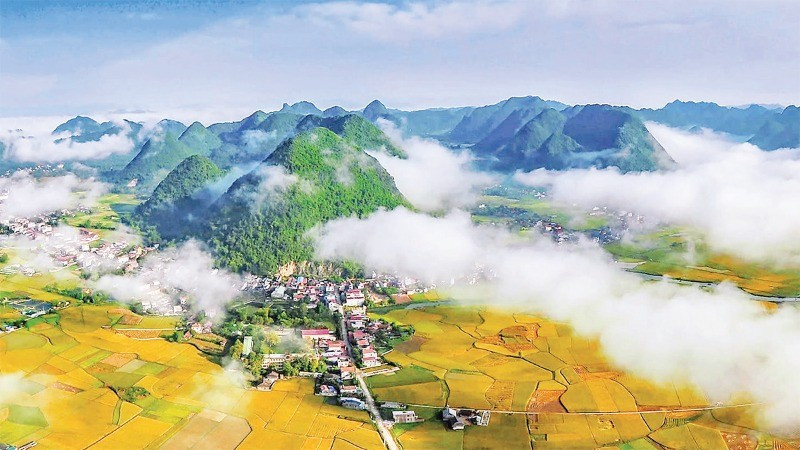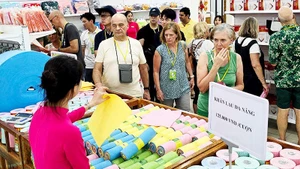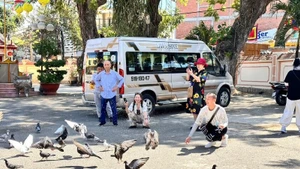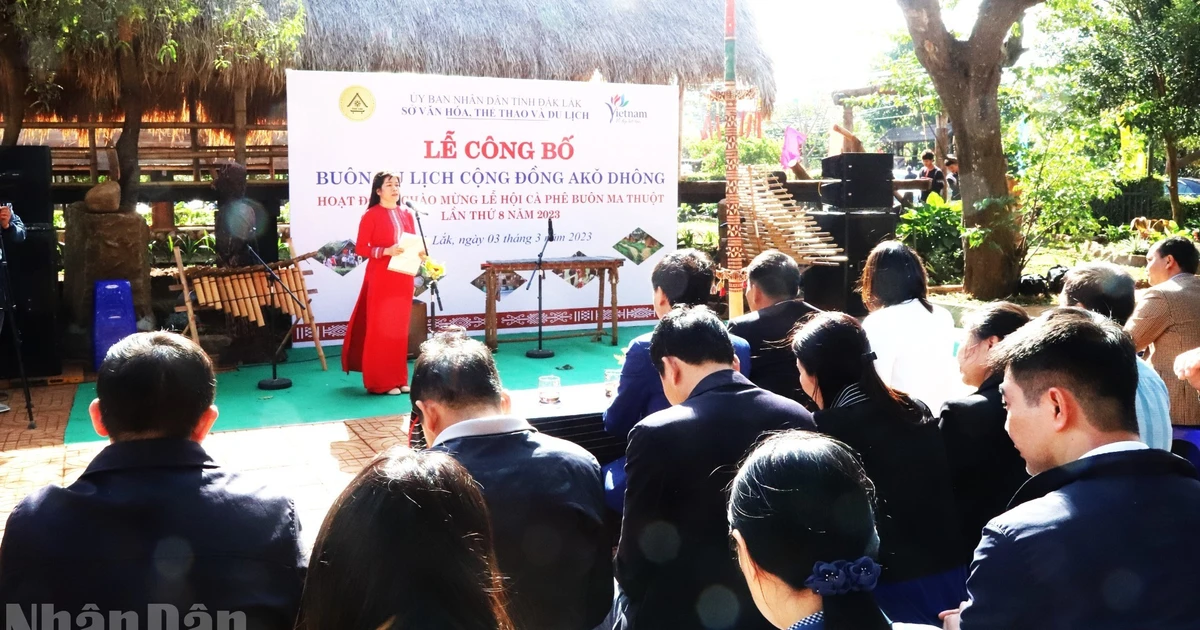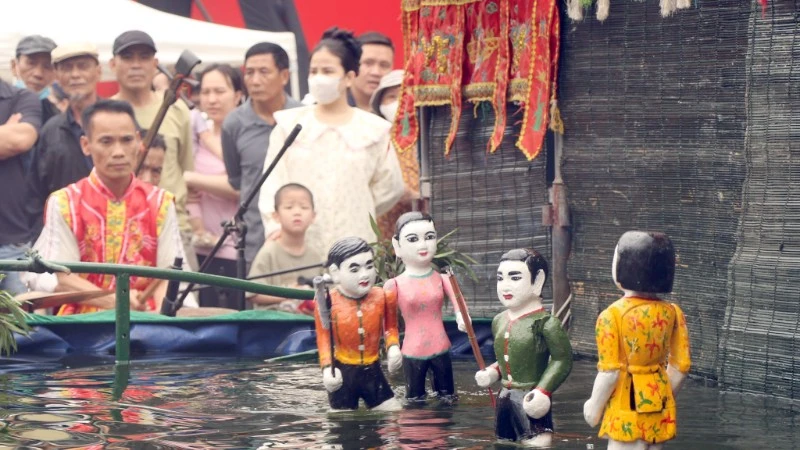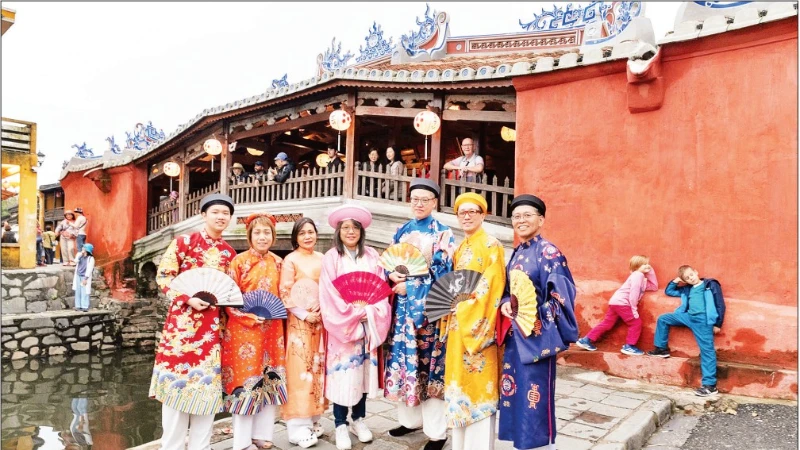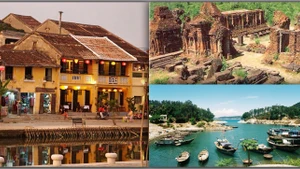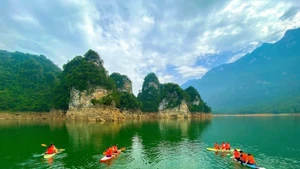Passing through the winding Tam Canh Pass, which embraces long limestone mountain ranges, Bac Son appears bathed in golden sunlight against a deep blue sky.
Developing culture linked with tourism
Bac Son has changed significantly today. Along both sides of the road leading to the centre of Bac Son District, modern concrete houses with plastic, metal and cement fibre roofs stand alongside traditional stilt houses with ancient yin-yang tiles covered in patches of green moss, a peaceful highlight of the Bac Son Valley.
Descending from Tam Canh Pass, at the left turn towards Long Dong Commune, we already see closely packed tile kilns. Large and small brick kilns line both sides of the road, with the distinctive yellow-brown colour of clay everywhere.
The traditional yin-yang tile making craft in Long Dong Commune has existed for over 100 years. Although market demand is not high currently, many local households maintain the tradition, keeping their kilns burning day and night, as a means to preserve their distinctive cultural heritage, a valuable asset in the traditional life of the community.
While nimbly cutting blocks of clay and chatting cheerfully, Duong Thi Nga explained: “The main material for making yin-yang tiles is pure clay purchased from Binh Gia District. The clay is then cut, filtered to remove impurities, soaked in water until pliable, then moulded and dried before firing in the kiln. The yin-yang tiles are trough-shaped, measuring 25-30 cm each. They’re called yin-yang because when laid, some tiles face up, others down. The upturned rows are yang tiles, the downturned rows are yin tiles. These rows interlock to create strength and cohesion.”
Unlike in the past, demand for yin-yang tiles has increased due to their aesthetic appeal and ability to keep interiors cool in summer and warm in winter. As a result, the livelihoods of local people have improved. The tiles are sold throughout the country.
Recently, the yin-yang tile making village in Long Hung Village, Long Dong Commune, has also become an official destination in the Lang Son UNESCO Geopark exploration journey: “A road opens up where bricks whisper ancient secrets.”
Continuing our journey, we arrive at Bac Son Valley in Quynh Son Cultural Tourism Village, 2 kilometres north of the district centre. Unlike the period from July to October with its golden rice fields, in March, Bac Son Valley is lush green, dotted with the white blossoms of apricot, pear and plum trees.
As a native of Bac Son with a passion for photography, Duong Doan Tuan often spends his free time roaming through villages, hunting for beautiful images of his homeland. Bac Son has nurtured him and brought him many prestigious photography awards.
Duong Doan Tuan also serves as Vice Chairman of the Bac Quynh Commune. According to him, for many years, the community-based tourism model has been considered to be one of the most effective and appropriate directions for local development.
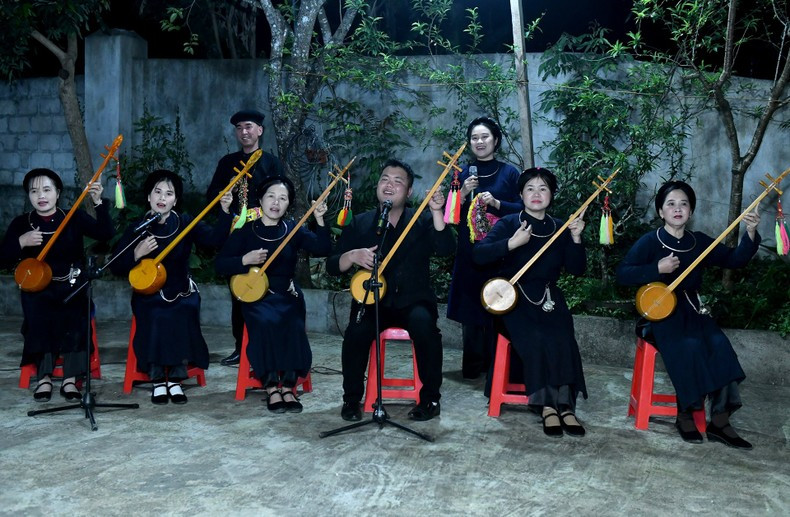 |
| Visitors are treated to a performance by residents of Bac Quynh Commune. (Photo: Nguyen Dang) |
Connecting tourism with real experiences
“In 2010, Bac Quynh Commune was selected by the district as a pilot for a cultural community tourism village. Since then, many households have registered to host visitors in homestays. They invest in housing, accommodation, and focus on introducing tourists to the local cultural identity, Tay ethnic traditions, and preparing suitable dishes for visitors,” said Tuan.
Duong Cong Co, owner of an accommodation facility in Tham Pat Village shared: “After graduating from university, I decided to return to my homeland to develop my family’s economy. In 2022, recognising the potential for community tourism in the area, I decided to start a homestay. With an area of over 1,200 square metres, I discussed with my family about taking a bank loan to renovate our house and build an experiential tourism service model.”
In the evening, when the atmosphere in Bac Son seems to settle down, it’s time for dances and songs to rise, captivating visitors from afar. The performers are young Tay men and women in indigo clothes.
Music and local culinary specialities have helped visitors experience and immerse themselves in the rustic life and distinctive culture of the local people, thus understanding and loving this heroic yet affectionate land of Bac Son even more.
Having previously worked and taught at Bac Son High School, with an educator’s awareness, Duong Thi Thep, Vice Chairwoman of Bac Son District, believes that the preservation of cultural features linked with tourism development needs to be built on a foundation starting with the younger generation. Educating children through folk songs and gourd lute sounds from their grandmothers and mothers helps them understand and love their homeland, gradually building awareness of caring for and developing their native place.
Bac Son District has five types of intangible cultural heritage associated with each ethnic group, including: festivals, social customs, traditional crafts, folk performing arts, and folk knowledge. Based on its natural, historical and cultural values, Bac Son is currently focused on developing experiential eco-tourism, historical and cultural tourism, and community-based tourism. To date, there are 10 tourist sites and accommodation facilities in Bac Son District.
Along with Bac Son, many other localities in Lang Son Province have also begun building and implementing tourism models linked to cultural identity values.
Le Hai Yen, Deputy Director of the Lang Son Department of Culture, Sports and Tourism, said: “Lang Son Province has 335 listed historical, cultural, and scenic sites. The province also has 9 national intangible cultural heritages and 2 intangible cultural heritages recognised by UNESCO as Representative Intangible Cultural Heritage of Humanity. Additionally, in September 2025, UNESCO will officially inscribe Lang Son Global Geopark.”
Duong Xuan Huyen, Vice Chairman of Lang Son Province, stated: “The province has paid attention to using information technology in the management and preservation of national cultural heritage linked with tourism development. Currently, in addition to developing products, routes, and tourist destinations, Lang Son is building management software systems, digitising heritage, and developing smart tourism mobile applications to preserve, promote and introduce the traditional cultural beauty of the province to people at home and abroad.”
